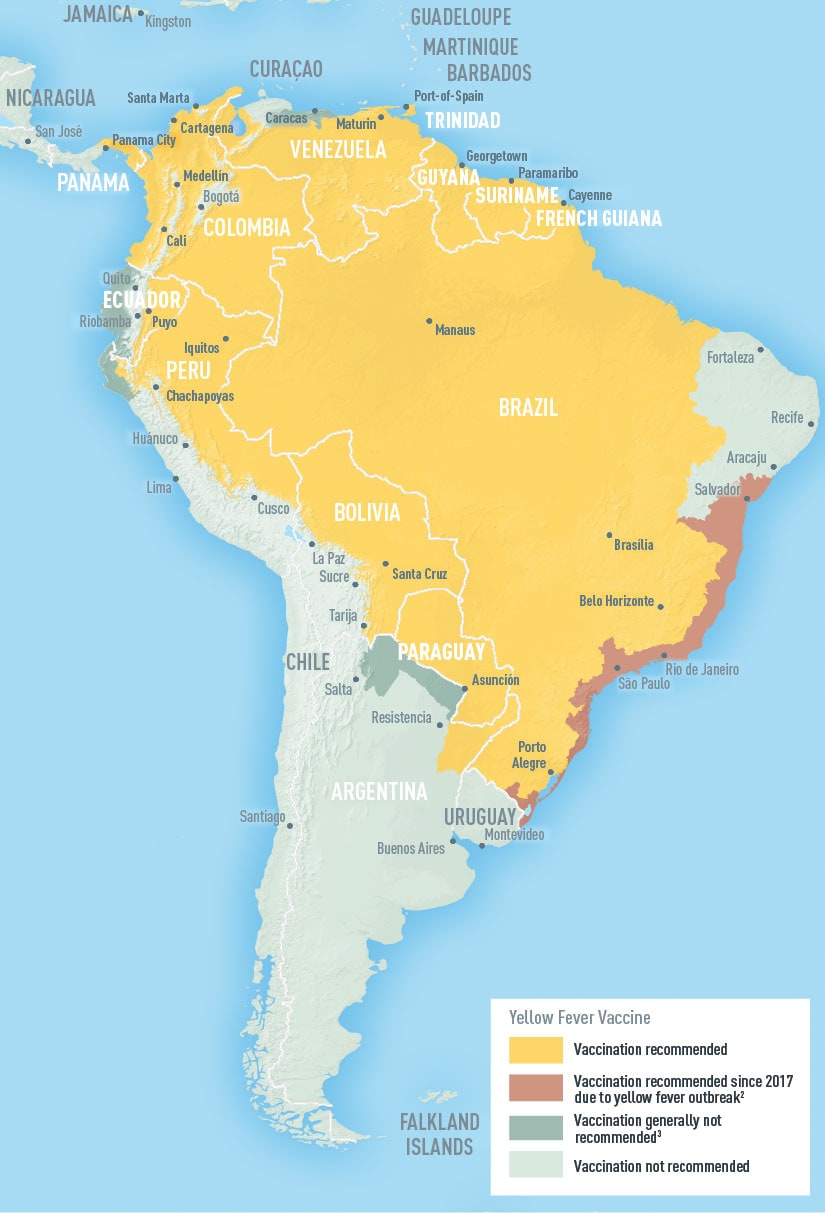4th case of Yellow Fever reported in Europeans who had recently traveled to South America in the past 8 months.
March 16th, 2017A travel-associated case of yellow fever has been reported by the Netherlands in March 2017 after travel to Suriname. During the past eight months, four travel-associated cases of yellow fever have been identified among EU travellers returning from South America. This represents a significant increase on four travel-associated cases of yellow fever among EU travellers during the last 27 years (1999 to July 2016).
Brazil has been experiencing a yellow fever outbreak since January 2017 and travel recommendations have been updated accordingly [1,2]. Therefore, EU travellers travelling to areas at risk of yellow fever in South America should be informed of the potential exposure to yellow fever virus and an individual risk benefit analysis should be conducted during pre-travel medical consultation. The ongoing yellow fever outbreak in Brazil should be carefully monitored, as the establishment of an urban cycle of yellow fever would have the potential to rapidly affect a significant number of people. The risk of introduction and further transmission of the yellow fever virus in the EU is currently considered very low.
Advice to travellers EU citizens who travel to, or live in areas where there is evidence of periodic or persistent yellow fever virus transmission, especially those in outbreak-affected regions, are advised to:
• Be aware of the risk of yellow fever in endemic areas throughout South America, including recently affected States in Brazil. WHO publishes a list of countries, territories and areas with yellow fever vaccination requirements and recommendations [1-3].
• Check vaccination status and get vaccinated if necessary. Vaccination against yellow fever is recommended from nine months of age for people visiting or living in yellow fever risk areas. An individual risk benefit analysis should be conducted prior to vaccination, taking into account the period, destination, duration of travel and the likelihood of exposure to mosquitoes (e.g. rural areas, forests) as well as individual risk factors for adverse events following yellow fever vaccination.
• Take measures to prevent mosquito bites indoors and outdoors, especially between sunrise and sunset when Aedes and sylvatic yellow fever mosquito vectors are most active [4]. These measures include: − the use of mosquito repellent in accordance with the instructions indicated on the product label; − wearing long-sleeved shirts and long trousers; − sleeping or resting in screened/air-conditioned rooms, or using mosquito nets at night and during the day.
Advice to health professionals: Physicians, health professionals and travel health clinics should be provided with or have access to regularly updated information about areas with ongoing yellow fever transmission and should consider yellow fever in the differential diagnoses for illnesses in relation to travellers returning from affected areas. To reduce the risk of adverse events following immunisation, healthcare practitioners should be aware of contraindications and comply with the manufacturers’ precautionary advice before administering yellow fever vaccine [5].


